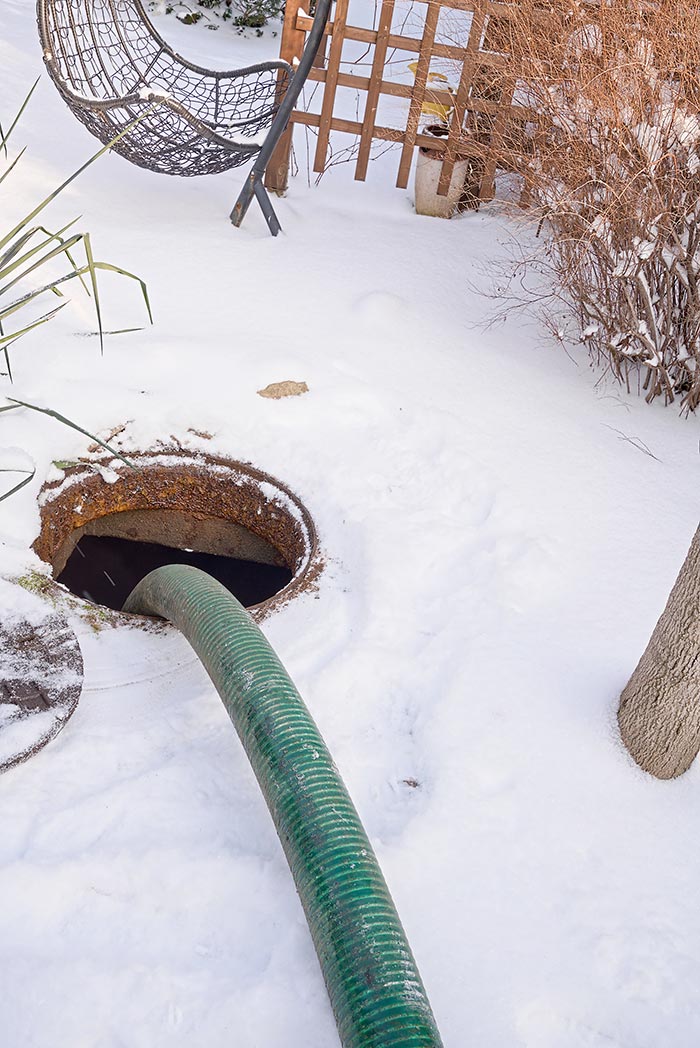
Spring is here and the melt has begun! When the snow starts to melt, many individual home sewage treatment systems (septic systems) may become waterlogged or temporarily flooded.
Symptoms:
- drains running slow
- toilets not flushing properly
- water backup into floor drains in the basement
A septic system has two main components: a septic tank that traps and biologically degrades solid waste, and a drainfield that provides additional biological treatment as well as infiltrating the water into the ground. Household water flows from the house sewer system into the septic tank then out to the drainfield. Any situation that prevents or slows down the flow of water through the septic system can cause problems.
Throughout the winter, normal use of water in a house keeps the soil in and around the drainfield and septic tank from freezing. So when the snow starts melting, the water may infiltrate into the drainfield area instead of running off. This can cause a temporary "high water table" which can leak into the septic tank or saturate the drainfield. When this happens, the waste water coming from the house cannot move through the septic system easily.
So you don't have to deal with a mess here are some tips to help your septic system before and during the spring thaw:
- The first thing to do is make sure there are no leaking fixtures in the house. A drop of water every 15 seconds can add up to a lot of additional water added to the septic system.
- Reduce water use.
- Check faucets, shower heads, toilets, sinks & any other water using devices for leaks & repair them as soon as possible.
- Don't put the water from a basement sump pump into the septic system.
- Don't let water from roof gutters or from the sump pump discharge into the drainfield area.
- Reduce the number of times you flush the toilet, wash clothes at a laundromat, reduce the number of showers &/or baths each day & only run the dishwasher when it is full.
Common sense is the key to reducing water use in the house and helping your septic system through the spring thaw. Remember the drainfield was designed to infiltrate the amount of water normally discharged from the house. When additional water, either from rain, snow melt, or flooding is added to the drainfield, the ability to handle household water becomes limited.
For more information, contact Morse Engineering and Construction.
Source: earth-smart-solutions.com
